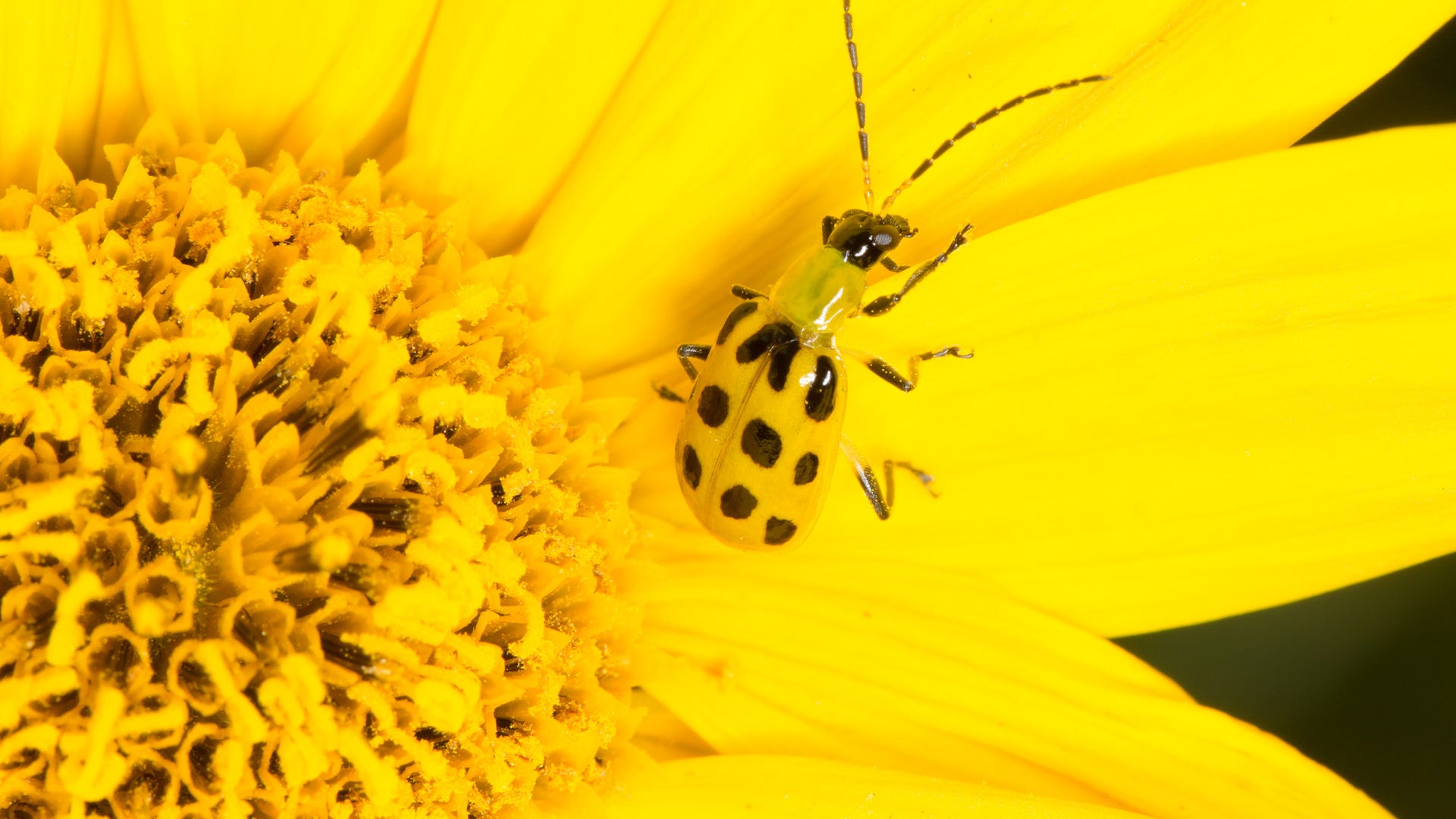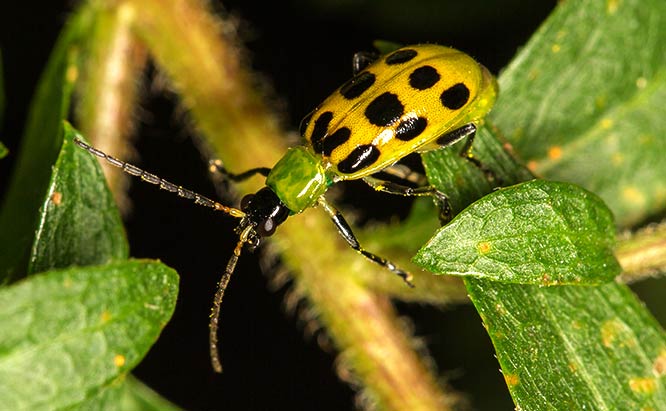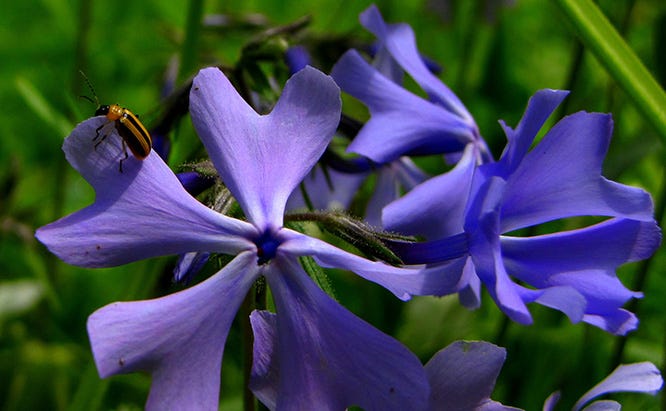
When new gardeners are just starting out, they often look for easy-to-grow vegetables, a list that often includes cucumbers, zucchini, squash and pumpkins.
Designated as cucurbit crops, these plants are also the primary target of the cucumber beetles, which means that these bugs may be one of the first pest problems a new gardener encounters.
The result? A pitched battle against these beetles by gardeners desperate to save their plants.
What Are Cucurbit Plants?
For several reasons cucumbers, zucchini, squash and pumpkins are favorite cucurbits among new gardeners. Most notably, they are easy to grow -- all you need to do is plant them and let them do their thing. Assuming a gardener has provided them with plenty of water, space, sun and nutrient-rich soil, these plants can thrive with little additional maintenance. The result? An easy win for new gardeners.
The cucurbit family includes cucumbers, pumpkins, summer squash, winter squash, watermelons, muskmelons, melons, loofah, gherkins, zucchini and wax gourds. Another reason cucurbits are so popular is that there are plenty of uses for the resulting produce – in recipes, as snacks or even as decorations.

Cucumber beetles come in three main varieties -- the spotted, the striped and the banded. Corn rootworms are cucumber beetle larvae.
Identifying Cucumber Beetles
There are three primary cucumber beetles: spotted, striped and banded. There are also several subspecies of each, but the general descriptions of these beetles (and their treatment) are identical.
- Spotted Cucumber Beetles – These agricultural pests feature a greenish-yellow back with multiple rows of black spots. They are about ¼-inch long.
- Striped Cucumber Beetles – The yellow and black stripes running down the backs of these ¼-inch beetles are their most distinctive feature.
- Banded Cucumber Beetles – Mostly a tropical species, the banded cucumber beetle is prominent in southern parts of Florida, Texas and Arizona. Adult beetles are green with yellow stripes, have an orange head and are about ¼-inch long.
- Corn Rootworms – These worms are not their own species, but the larvae of spotted cucumber beetles. They are a difficult and devastating pest for corn farmers. Cucumber beetle eggs are deposited in the soil near the root systems of plants. Upon hatching, the larvae feed on the roots of these plants. Rootworms look much like other larva forms – slender, about ½-inch long, with a white body and dark brown heads.
Why New Gardeners Hate Cucumber Beetles
It is easy to understand why gardeners hate cucumber beetles. These voracious insects can have a devastating effect on a cucurbit or corn crops. Damage can begin in the early spring and continue until harvest, with the beetles attacking various parts of the plant as they mature. Further, the insects and their eggs can overwinter, resulting in persistent problems across multiple growing seasons.
- Root damage – Larvae, in the form of corn rootworms, attack roots of plants, destroying soft tissue and root hairs, which limit water and nutrient uptake.
- Pollination damage – Adult beetles often eat pollen and pollen-producing parts of the plants, making it difficult for plants to fruit properly. In corn, they eat the silk out of corn cobs.
- Leaf damage – Adult cucumber beetles chew holes in leaves. Most plants can survive this particular attack, but the beetles often spread bacterial wilt in the process.
- Rind damage – As the season progresses and leaves become less available, adult cucumber beetles will move on to eating pits into the rinds of pumpkin, squash, cucumber and other cucurbit crops. This damage is often severe enough to make the produce unfit for sale, consumption or decoration.
- Bacterial Wilt – Many cucumber beetles harbor the bacteria responsible for bacterial wilt inside their stomach, which means the disease spreads by their excrement and contact with their mouthparts. The affliction causes leaf wilting which eventually kills off the entire plant. The bacteria may overwinter inside the beetles, too, so if you have it one year in the garden, it will probably show up again the next.

Cucumber beetles can infect plants with bacterial wilt, which will kill off the entire plant.
Cucumber Beetle Pest Control
The easiest way to treat cucumber beetles is to target them as adults. By eliminating adults, you can break the reproduction cycle within a single season. Use an OMRI Listed® spray that uses pyrethrin and potassium salts of fatty acids to target the beetles’ nervous systems and protective outer shell. Apply to your plants every 7 to 10 days to prevent additional damage. Safer® Brand Tomato and Vegetable Insect Killer may be used until the day of harvest, allowing you to continually harvest from cucurbit plants, which often generate fruit throughout the season.
You can also target the larvae directly by applying Safer® Brand BioNEEM, an OMRI Listed® insecticide that uses azadirachtin to disrupt their molt cycle. Apply every 7 to 10 days.
Be aware that cucumber beetles can fly. If a garden is near an infected cornfield, then it may see a continual influx of cucumber beetles. Another control method – using row covers -- relies on their preference to fly from plant to plant. Row covers can be difficult to deploy, as their ends must be well-sealed to stop incoming cucumber beetles.
Looking for More Pest Control Tips?
Safer® Brand offers an Insect Library to help guide gardeners in their efforts to control pests on their organic crops. You can also learn more about gardening and Safer® Brand’s line of OMRI Listed® products by visiting Safer® Brand on Facebook, where you can join a community of like-minded gardeners. Also be sure to subscribe to the Safer® Brand e-Newsletter, which offers links to fresh articles and ideas for using our OMRI Listed® products.



